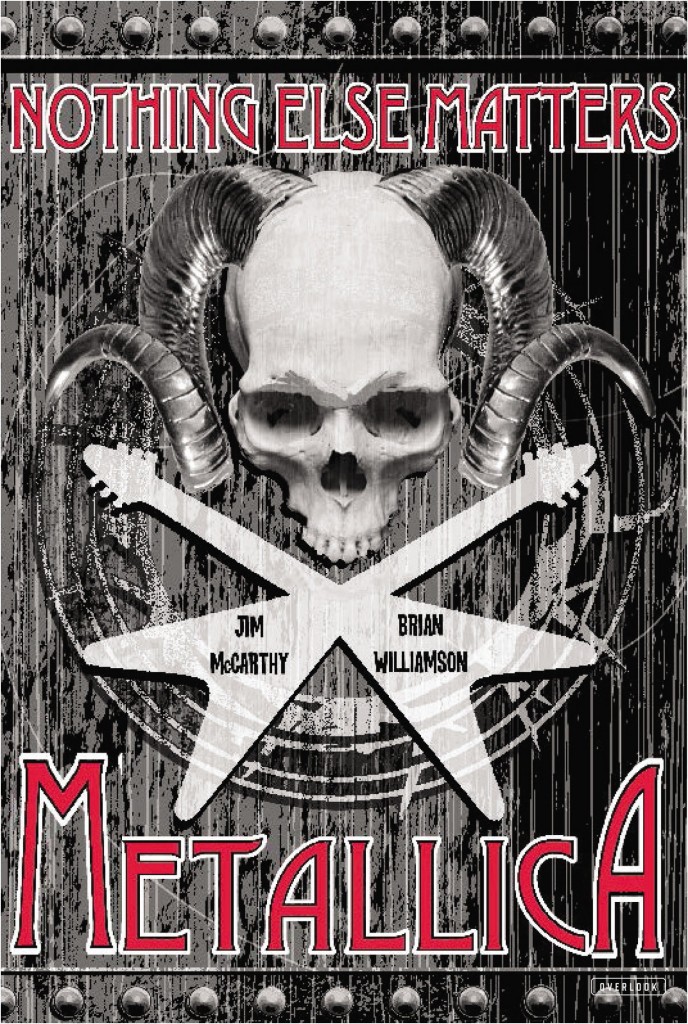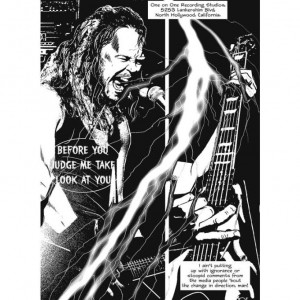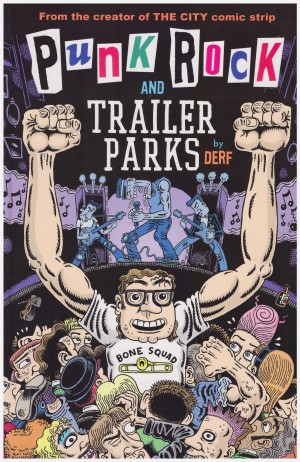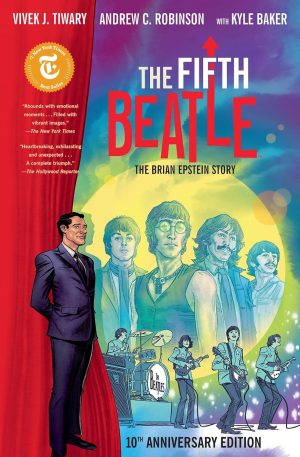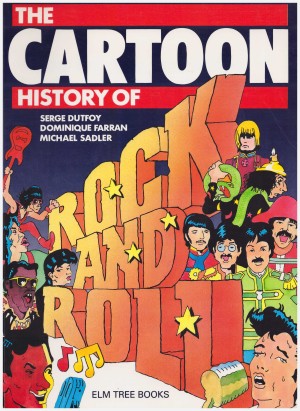Review by Ian Keogh
Jim McCarthy and Brian Williamson pull off a nifty trick with their Metallica biography. By concentrating on personalities they produce something able to hook readers with perhaps only a passing interest in the band. The highlights and lowlights are present and correct, and it’s not a whitewashed hagiography either.
At first McCarthy’s script appears compiled from what appear to be interview quotes, although this isn’t ever explicitly stated. It later becomes apparent this isn’t the case, but the first person narratives provide an intimacy that more traditional biographical statements wouldn’t. It’s a good choice,which further gives an authentic voice and one that distinguishes the band members. Lars Ulrich sounds different from Dave Mustaine who’s distinguishable from James Hetfield. It also provides a revealing and incisive commentary. In his early twenties Ulrich visited England and hung out with bands grouped under the catch-all umbrella of the New Wave of British Heavy Metal. Their down to earth attitude impressed him, a vast cultural divide between largely working class kids from the UK and the stadium demands of successful US metal bands. It would be the foundation of Metallica’s own approach.
Right place and right time (and later wrong time) is a thread running throughout Metallica’s first few years. Ulrich conned his way onto a compilation album before having a band, never mind a tune, and as he and a few contacts pulled together, Mustaine replied to an ad. Something that comes through from the start is a great self-belief, an attitude that served the band well.
Brian Williamson’s art employs much digital trickery, photoshopping images and mutating them to purpose, but also blends this with his own art until the lines become blurred. Surely no photograph of Mustaine’s lunatic father pulling at his son’s ear with a pair of pliers exists, but Williamson manages to convince that it does.
As is the case with most biographies, it’s the early years of struggle that provide the most interesting material, and the first six years of a career that had run to thirty by the time of publication occupy well over half the content. Yet the creators avoid the mistake of transforming the narrative into a listing of tour dates and awards beyond the release of And Justice For All. It’s here that Hetfield is given some ballast, having been the subject of anecdotes and misfortune previously without much characterisation. There is a lapse in building up a new bass player Robert Trujillo then neglecting to name him, but errors of this nature are few.
Metallica fans, and there are a lot of them, should pick this up. They won’t be disappointed. It’s a harder sell to people who don’t like the band. Neither creator has a fan base, but divorcing Metallica from reality and considering their lives as story provides some fantastic material. Conflicted personalities, excess, success, tragedy and belief. It doesn’t gloss over the problems or the less well received actions, but in deference to a perceived core audience not all controversy has been as diligently detailed as it might have been.
The Metallica content is slightly slimmer than it might seem due to the final twenty pages being occupied by promo material for other musical biographies by the creators.
